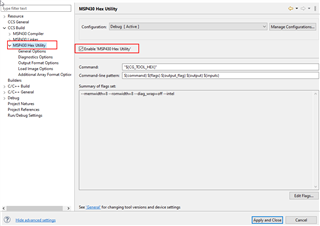Part Number: CCSTUDIO-MSP
Hi team,
My customer have Msp430f1232 chip and program it with code composer with BSL bootloader. He want to know there is a method to read out code from MSP430F1232 and format in hex file in CCS.
He bought a MSP430G2 lunch pad for this purpose also but hadn't get any success ! Could you give me some advice? Looking forward your response!
Thank you very much!
Best regards,
Alice Bai


